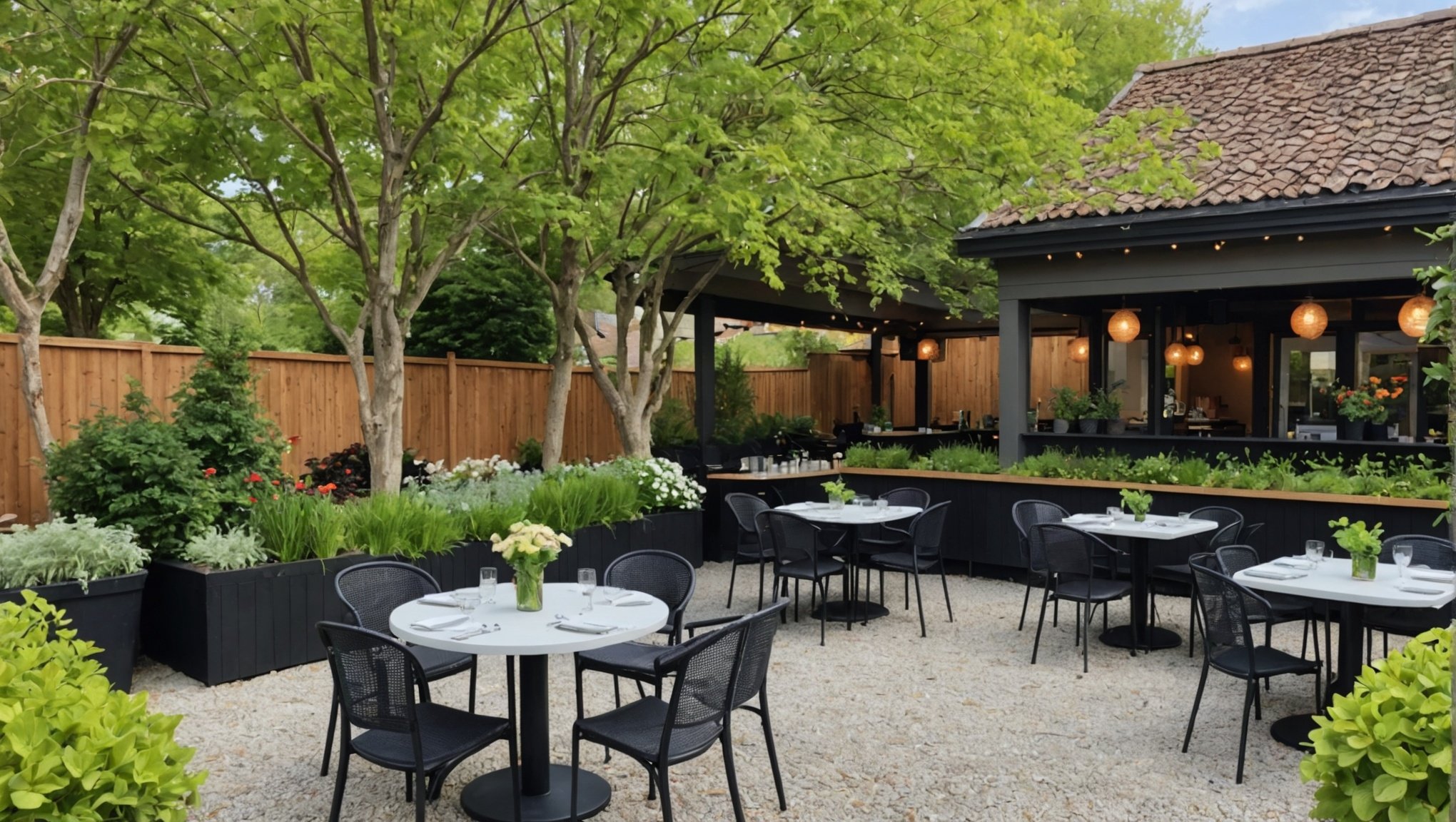Creating a sensory garden dining experience can elevate your rural bistro, drawing guests into a world of delight. Imagine lush greenery, vibrant flowers, and soothing sounds that awaken the senses. Key features like aromatic plants, comfortable seating, and natural pathways invite patrons to linger longer. This transformation not only enhances the dining atmosphere but also fosters a connection between nature and culinary enjoyment, making every meal memorable. Explore how these elements can create a unique dining haven that keeps customers returning to savor and unwind.
Importance of Sensory Gardens in Dining Experiences
Incorporating sensory gardens into a dining atmosphere can significantly enhance the overall experience for patrons, especially in a rural bistro setting. These gardens are designed to engage all five senses, providing a unique and immersive environment that elevates dining satisfaction. By surrounding diners with a variety of plants, flowers, and aromatic herbs, sensory gardens create a multi-sensory experience that can transform a meal into a memorable occasion.
Topic to read : Sustainable soirés: how bars can maintain the party atmosphere while embracing eco-friendly practices
The benefits of sensory gardens extend beyond aesthetics. They contribute to a calming and rejuvenating atmosphere, which can positively impact diners’ moods and perceptions of the meal. The gentle rustling of leaves, the fragrance of blooming flowers, and the vibrant colours of the garden can all play a role in enhancing the dining atmosphere. This sensory engagement not only makes the dining experience more enjoyable but can also encourage repeat visits, as customers seek to relive the unique ambiance.
Several rural bistros have successfully implemented sensory gardens, demonstrating their potential to boost customer satisfaction. For instance, a bistro in the countryside might use a garden to showcase local produce, allowing guests to see and smell the ingredients before they are served. Such implementations not only highlight the freshness of the offerings but also provide an educational aspect, as diners learn about the source of their meals. These case studies highlight the practical benefits of sensory gardens, making them a valuable addition to any dining establishment aiming to enhance customer experience.
Also to read : Ultimate noise-reducing flooring options for open kitchen restaurants: your complete guide
Key Features of an Inviting Sensory Garden
Creating an inviting sensory garden involves the thoughtful integration of various sensory elements to craft a truly immersive experience. The art of garden design plays a pivotal role in achieving an inviting atmosphere that captivates visitors and enhances their dining experience.
Sight: Visual Appeal in Garden Layout
A visually appealing garden is achieved through strategic planning and design. Choosing a diverse range of plants with varying colours and heights can create a dynamic visual experience. Incorporating elements such as sculptures, water features, or artistic decor can further draw attention and enhance the garden’s aesthetic appeal. The careful selection of colours, such as vibrant blooms and lush greenery, can stimulate the sense of sight and create a harmonious environment.
Smell: Aromatic Plants for a Unique Experience
Fragrance is a powerful sensory element that can transform a garden. Including aromatic plants such as lavender, rosemary, and jasmine can create a unique olfactory experience. Layering scents by planting different species in proximity can result in a captivating aroma that changes with the seasons. This thoughtful approach ensures that the garden remains fragrant throughout the year, providing a continuous sensory delight.
Texture: Engaging the Sense of Touch
Engaging the sense of touch is an essential aspect of a sensory garden. Selecting plants with varied textures, such as the soft leaves of lamb’s ear or the rough bark of certain trees, invites tactile exploration. Incorporating materials like stone, wood, and water features can add to the textural diversity. Designing pathways and seating areas with different surfaces also enhances the tactile experience, making the garden a truly interactive space.
Practical Tips for Designing Your Sensory Garden
Creating a sensory garden requires careful planning and thoughtful garden design tips to ensure a harmonious and engaging environment. Here are some practical steps to guide you through the process.
Assessing Space and Planning Layout
Begin by evaluating the available space for your garden. Consider the dimensions, sunlight exposure, and soil quality, as these factors will influence your design choices. Sketch a layout that incorporates areas for various sensory elements, ensuring a balanced distribution of features. Pathways should be thoughtfully placed to guide visitors through different sensory zones, enhancing their overall experience.
Plant Selection Based on Local Climate
Choosing the right plants is crucial for a successful sensory garden. Focus on plant selection that thrives in your local climate to ensure sustainability. Research native species that offer diverse sensory attributes, such as vibrant colours, unique textures, and captivating scents. This approach not only supports the local ecosystem but also reduces maintenance efforts, as native plants are more resilient to regional conditions.
Maintenance Tips for Longevity and Vibrancy
Regular maintenance is essential to preserve the beauty and functionality of your sensory garden. Implement a schedule for watering, pruning, and fertilizing to keep plants healthy and vibrant. Monitor the garden for pests and diseases, addressing issues promptly to prevent damage. Seasonal adjustments, such as mulching and replanting, can help maintain the garden’s sensory appeal year-round. By following these maintenance tips, your sensory garden will continue to enchant visitors with its dynamic and immersive atmosphere.
Enhancing the Dining Experience with Garden Integration
Integrating gardens into dining spaces can profoundly enrich the outdoor dining experience, fostering customer engagement and enhancing the overall atmosphere. By thoughtfully combining natural elements with dining areas, establishments can create a seamless blend of indoor and outdoor environments, elevating the dining experience to new heights.
Creating Outdoor Dining Areas
Designing inviting outdoor dining areas involves arranging comfortable seating that complements the natural surroundings. Use materials like wood and stone to create a harmonious flow between the garden and dining space. Successful examples include bistros that incorporate pergolas adorned with climbing plants, providing shade and a touch of nature. This integration not only enhances visual appeal but also immerses diners in the tranquil ambiance of the garden.
Engaging Customers with Garden Activities
Interactive experiences can significantly boost customer engagement. Consider offering herb-picking sessions where diners select fresh ingredients for their meals, or organize garden tours to educate guests about the plants and their uses. Hosting events like tastings or workshops in the garden can also highlight its sensory aspects. Collaborating with local artists or chefs to create unique offerings further enriches the dining experience, making it memorable and distinctive.
Seasonal Changes and Adaptability
To maintain sensory appeal year-round, plan for seasonal shifts in garden design. Use plants that thrive in different seasons to ensure continuous vibrancy. Adjust dining options to reflect seasonal produce, aligning garden elements with menu themes. This adaptability not only keeps the garden dynamic but also encourages repeat visits, as customers anticipate new experiences with each season.







No responses yet